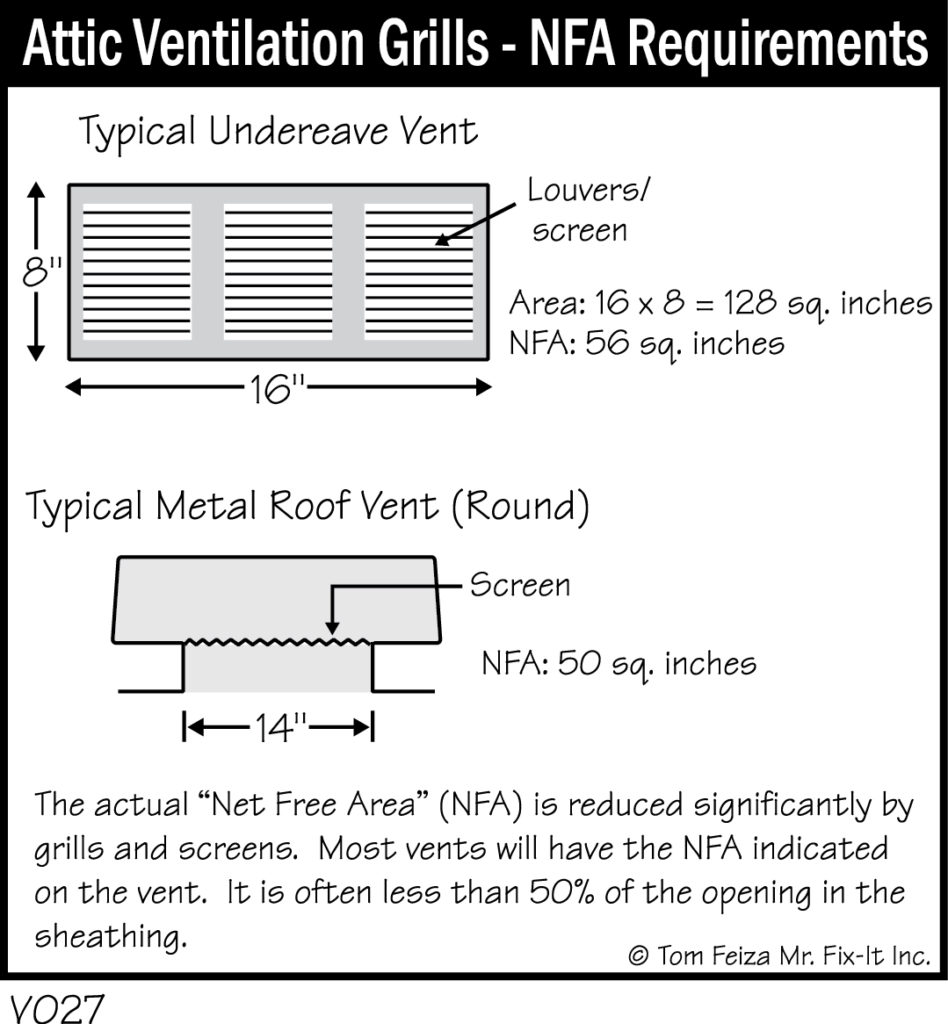
By Tom Feiza, Mr. Fix-It, Inc.
Why do we inspect attic ventilation? Because it’s designed to protect a home. Ventilation keeps the attic cooler in the summer, which protects roof shingles and the home’s basic structure, and it limits heat movement into the living space. During the winter, attic ventilation keeps the attic drier, which limits condensation (photo: Stains on Roof Deck) and helps remove winter heat from the attic, preventing ice dams and leaks.

Ventilation openings high and low
Whenever possible, attics should have ventilation openings high on the roof and low on the roof. Rising warm air moves from the soffits to the ridge. Wind pushing against a home also creates areas of higher pressure (soffit) and lower pressure (ridge).
Too often, explanations of attic ventilation get complicated with too much detail on gable end vents, turbine vents and power attic ventilators – so let’s forget about them for now.
Basic requirements
Building codes and generally accepted data suggest that an attic should have 1 sq ft of ventilation for every 150 sq ft of attic space (1/150). If there is a low-perm vapor barrier, the ventilation requirement is reduced to 1/300, because we assume that less vapor (moisture) will move into the attic from the heated space.
How professionals calculate attic ventilation
Simple math allows you to calculate the need for attic ventilation (illustration V042). Determine the square footage of the attic and check whether there is a vapor barrier. Divide the square footage by 150 or 300 and you have the required net free area (NFA) for venting. Of this venting, 50% should be at the ridge and 50% at the soffit.

Next, you need to identify the type of vents. They will all be NFA-rated. For a typical can vent, the screen and cover limit the actual NFA area of the vent opening by 50% (illustration V027). Ridge vents and continuous soffit vents are rated by manufacturers for NFA per lineal foot. You can find details at the manufacturers’ websites.

What else to look for
During your inspection of the attic, always note excessive stains, organic growth, improper bath and kitchen fan venting, delaminating plywood, excessive rust, and improper attic venting (photo: Rusty Attic Nails, Delamination, Stains). Look for blocked vents, restricted openings below ridge vents, and an inadequate number of vents. You don’t need to determine how to fix these shortcomings; just recommend further evaluation.

Basically, whenever you see signs of poor ventilation, recognize that you should report this as a problem.

